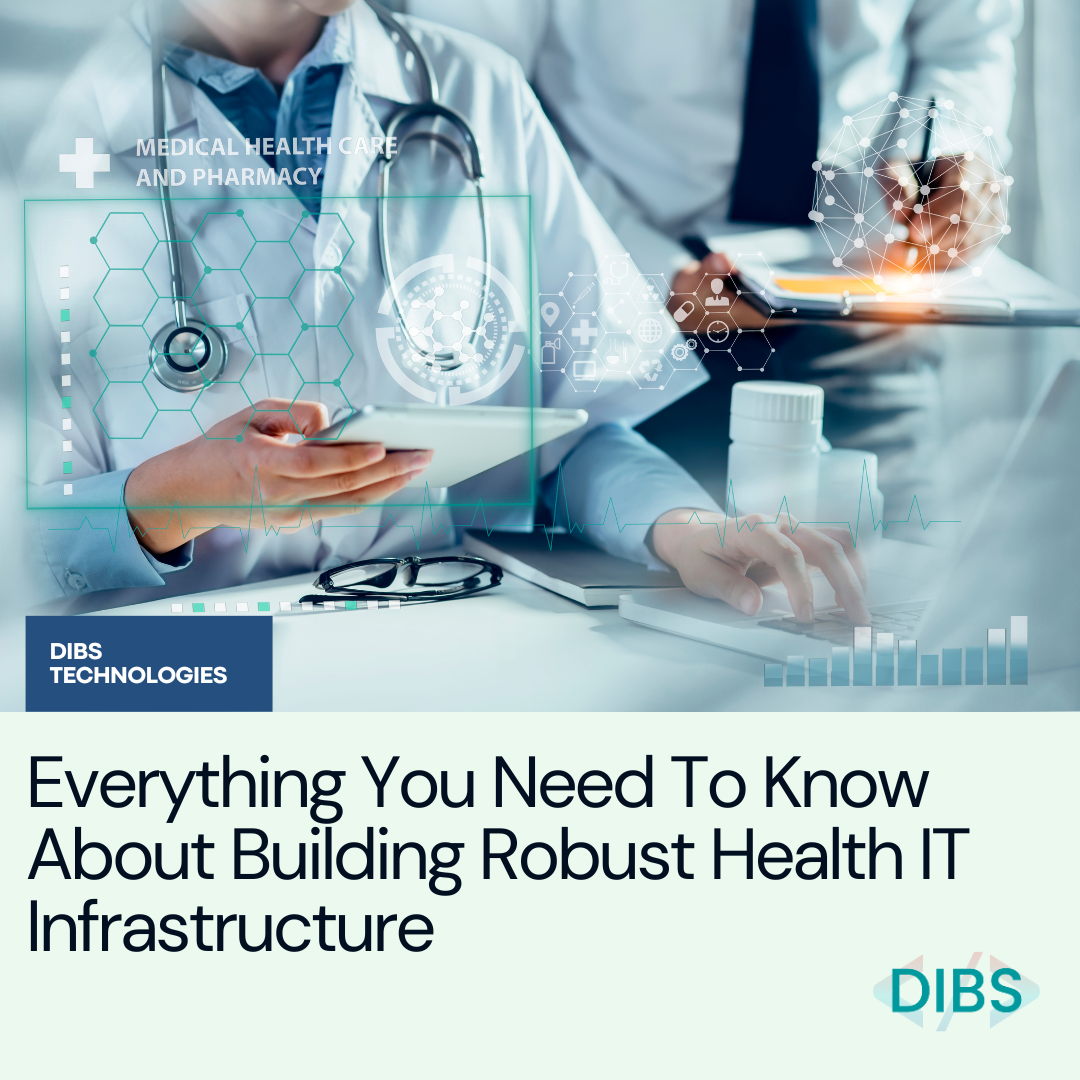In the ever-evolving landscape of healthcare, Information Technology (IT) has played a supreme role. Robust Health IT Infrastructure is the backbone of modern healthcare systems as it offers a variety of benefits. The integration of IT has not only improved patient care but also streamlined administrative processes. In this blog, we will delve into the evolution, components, considerations, and future trends of robust health IT infrastructure, showcasing its significance in shaping the future of healthcare.
Understanding Health IT Infrastructure
Health IT infrastructure refers to the complete framework of technology, tools, and systems used to facilitate the management and exchange of health information. Building a robust health IT Infrastructure enhances patient outcomes and improves operational efficiency. Thus, healthcare professionals need to understand the needs of Health IT Infrastructure in healthcare centers.
The Evolution of Health IT Infrastructure
Historical Perspective on Health IT in Healthcare
The journey of Health IT dates back to the use of Electronic Health Records (EHR) in the late 20th century. The transition from paper-based records to digital form marked a significant leap forward. Early systems were basic and focused primarily on storing patient data digitally. However, the potential for more comprehensive and interconnected systems soon became evident.
Milestones and Technological Advancements
The turn of the century witnessed milestones such as Health Information Exchanges (HIEs). Using HIE, healthcare professionals could share patient data across healthcare organizations securely. The biggest challenge faced in implementing HIE was the cost involved in it. With the rise of cloud computing, data storing and processing became scalable and cost-effective solutions.
Current State of Health IT Infrastructure
Today, Health IT Infrastructure encompasses a range of technologies, including EHR systems, cybersecurity measures, and telehealth solutions. The integration of these components forms the foundation for a robust and interconnected healthcare ecosystem.
Components of a Robust Health IT Infrastructure
Electronic Health Records (EHR) Systems
EHR systems have evolved beyond mere digital records of patients. They now serve as a way for information exchange among healthcare providers. Thus, EHRs improve the coordination of patient outcomes. Interoperability, however, remains a challenge, as it requires standardized protocols for data exchange.
Cybersecurity Measures
With the digitization of healthcare data comes the pressing need for robust cybersecurity measures. The sensitive nature of healthcare data makes it essential to protect patient data from cyber threats. Encryption, multi-factor authentication, and regular security audits are crucial components of a comprehensive cybersecurity strategy.
Telehealth and Remote Patient Monitoring
Global events, such as pandemics and war, emphasized the importance of remote healthcare and led to the adoption of telehealth. Telehealth not only improves accessibility to healthcare services but also enhances patient engagement. It is required to ensure a seamless patient experience while integrating telehealth into the health IT framework.

Key Considerations in Building and Maintaining Health IT Infrastructure
Compliance with Regulatory Standards
Healthcare organizations must comply with the strict regulatory standards of the Health Insurance Portability and Accountability Act (HIPAA). The management must ensure that the data handling is ethical and complies with privacy regulations. Therefore, continuous monitoring and updates are essential to align with evolving legal frameworks.
Scalability and Future-Proofing
The dynamic nature of technology requires a scalable infrastructure that can adapt to emerging trends. Future-proofing health IT infrastructure involves anticipating technological advancements and designing systems that can evolve alongside them. Scalability ensures that healthcare organizations meet the growing demands of patient care and data management. Thus, building an infrastructure considering scalability and future advancements should be a part of the priority list for the management.
Overcoming Challenges in Health IT Implementation
Common Roadblocks and How to Tackle Them
The implementation of health IT infrastructure is challenging. Resistance to change, interoperability issues, and concerns about data security are common roadblocks. Thus, addressing these challenges requires a strategic approach involving effective change by the management. Only with the engagement of stakeholders health IT infrastructure can be implemented.
Need For Staff Training Programs
Deploying new technologies does not ensure successful implementation of health IT infrastructure. Staff training programs are crucial as they equip healthcare professionals with the skills to navigate and utilize the new technologies effectively. Thus, investing in training programs can be beneficial in the long run.
Addressing Resistance to Health IT Adoption
Workflow disruption and complicacy in using new technology can lead to resistance to adopting health IT. Communicating the benefits to the staff and the stak
eholders, along with adequate support, can help mitigate resistance and foster a culture of innovation.
The Future of Health IT Infrastructure
Emerging Technologies in Healthcare
The emerging technologies are promising for the future of health IT infrastructure. Artificial Intelligence (AI), machine learning, and blockchain are the most recent advancements in healthcare. These advancements have revolutionized data analytics, cyber security, and decision support systems. These technologies are capable of enhancing the precision and efficiency of healthcare delivery.
Anticipated Trends and Innovations
Trends like the Internet of Medical Things (IoMT), 5G connectivity, and virtual reality in healthcare are on the horizon. These innovations can bring transformative changes, enabling more personalized and patient-centric care. The interconnectedness of devices and systems will contribute to a more holistic and data-driven approach to healthcare.
How Robust Health IT Infrastructure Will Shape the Future of Healthcare
With the evolution of health IT infrastructure, it is evident that it will impact the future of healthcare. From improving diagnostic accuracy to facilitating personalized treatment plans, robust health IT systems will change how healthcare is delivered. Thus, building a robust health IT infrastructure will make healthcare more accessible, efficient, and patient-oriented.
Conclusion
In conclusion, building a foundation for healthcare excellence through robust health IT infrastructure is not just a digital alternative but a necessity. The journey from historical milestones to the current state and the future of health IT showcases its transformative potential. Healthcare organizations that invest in and embrace robust health IT infrastructure are not only future-proofing their operations but also contributing to a healthier and more connected society.
Talk to our experts to know more about the technological advancements in health IT infrastructure. Learn how the DIBS team can help you build a robust health IT infrastructure for your healthcare center.







Leave a Comment